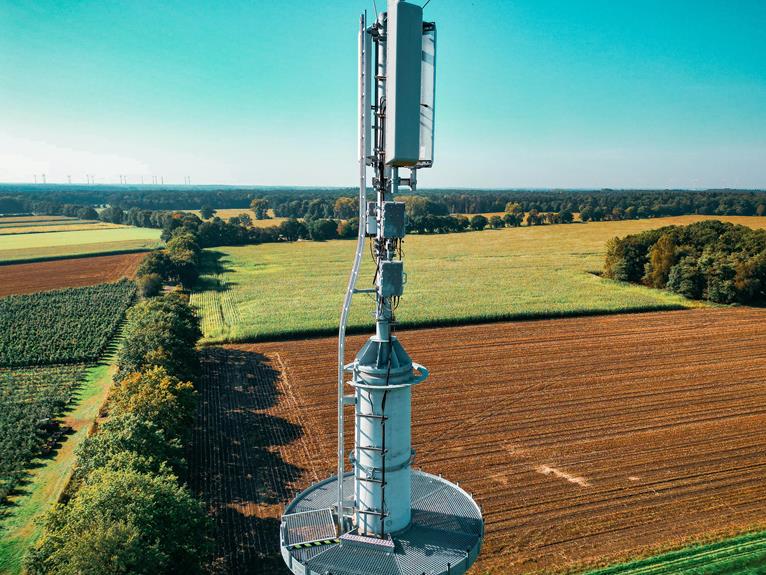You’re involved in field services and keen on optimizing data collection methods. Have you considered the diverse range of data collection techniques in field services? From direct observation providing real-time insights to self-reports unveiling individual perspectives, each method offers unique advantages. But what about indirect observation and its ability to uncover hidden behaviors? Or the in-depth responses gathered through interviews? The landscape of data collection in field services is rich and varied, offering a plethora of options to explore.
Direct Observation
When conducting field services, direct observation serves as a crucial data collection technique. Observation techniques play a significant role in ensuring data accuracy and data validation in the field service industry. By directly observing activities, behaviors, and interactions, you can gather real-time information that is invaluable for making informed decisions.
To effectively utilize direct observation, it is essential to establish clear objectives and define what specific data points you are looking to capture. This method allows you to gather accurate and reliable data directly from the source, minimizing the risk of misinterpretation or bias that may occur with indirect methods.
During direct observation, it is crucial to maintain an objective and unbiased perspective to ensure the integrity of the collected data. By documenting your observations in a systematic and detailed manner, you can enhance the validity and reliability of the data gathered.
Indirect Observation
Utilizing indirect observation as a data collection technique in field services involves gathering information without direct interaction with the subjects or processes being studied. This method often includes participant observation, where the researcher immerses themselves in the environment without revealing their true purpose. Through indirect observation, researchers can uncover hidden behaviors that might not surface in more traditional forms of data collection.
Covert observations, a type of indirect observation, involve the researcher concealing their identity or intentions to observe subjects naturally. This approach allows for a more authentic representation of behaviors since participants are unaware of being studied. However, conducting covert observations raises ethical considerations regarding privacy and informed consent. Researchers must carefully navigate these ethical dilemmas to ensure that the benefits of the study outweigh the potential risks to the participants.
Self-reports
When it comes to self-reports in field services, accuracy is a key factor to consider. Participants’ ability to provide truthful and precise information can greatly impact the data collected. However, challenges such as memory bias and social desirability can affect the reliability of self-reports. To enhance self-reporting methods, researchers often implement strategies like providing detailed instructions, using visual aids, and ensuring confidentiality to encourage honesty.
Accuracy of Self-Reports
Self-reports play a crucial role in data collection within field services, as they rely on individuals providing information about their own experiences, behaviors, and perceptions. When examining the accuracy of self-reports, two key factors to consider are memory accuracy and response bias. Memory accuracy refers to how well individuals can recall past events or experiences when providing information. This can impact the reliability of the data collected, as memory can be fallible and subject to distortion over time. Response bias, on the other hand, occurs when individuals provide answers that they believe are more socially acceptable or desirable, rather than reflecting their true experiences or behaviors. This bias can lead to inaccuracies in the data by skewing the information provided. Understanding and addressing these factors are essential in ensuring the validity and reliability of self-reported data collected in field services. Researchers must implement strategies to minimize memory errors and mitigate response biases to obtain more accurate and valuable insights from self-reports.
Challenges in Self-Reports
Considering the challenges inherent in self-reports, it is imperative to acknowledge the potential limitations that can impact the reliability and validity of data collected through this method. Validity concerns arise due to the reliance on participants’ memory and willingness to provide accurate information. Self-reports are susceptible to social desirability bias, where respondents may alter their answers to align with societal norms or expectations, leading to inaccuracies. Additionally, the subjective nature of self-reports can introduce errors, as individuals may interpret questions differently or provide responses based on their perceptions rather than actual experiences.
Reliability issues also pose a challenge in self-reports, as consistency in responses over time may vary. Factors such as mood, environment, or even the wording of questions can influence the reliability of data collected. Moreover, individuals may provide different responses to similar questions on different occasions, affecting the overall reliability of the information gathered. Understanding these validity concerns and reliability issues is crucial when utilizing self-reports for data collection in field services.
Enhancing Self-Reporting Methods
To enhance the reliability and validity of self-reporting methods in field services, implementing strategies that minimize biases and errors is essential. When aiming to improve reliability and reduce bias in self-reporting methods, consider the following strategies:
- Establish Clear Instructions: Provide detailed guidelines on how to report data accurately to reduce misinterpretation and errors.
- Use Structured Questionnaires: Structuring questions with clear response options can help increase response rates and minimize ambiguity.
- Incorporate Validation Checks: Include validation checks within the self-reporting process to enhance the validity of the data collected.
- Offer Incentives: Providing incentives can motivate participants to respond truthfully and promptly, thus improving response rates and data accuracy.
Questionnaires
When designing surveys for field services, consider tips to enhance the effectiveness of your questionnaires. Pay attention to factors like question clarity, order, and response options to optimize data collection. Utilizing appropriate data analysis methods will help extract valuable insights from the information gathered.
Survey Design Tips
Survey design is a critical aspect of data collection in field services. When creating surveys for field service data collection, it is essential to follow best practices to ensure the accuracy and reliability of the information gathered. Here are some survey design tips to consider:
- Clear Objectives: Clearly define the purpose of the survey and what specific data you aim to collect. This will help in structuring the questions effectively.
- Appropriate Question Types: Use a mix of open-ended and close-ended questions to gather qualitative and quantitative data. This variety helps in obtaining diverse insights.
- Logical Flow: Organize questions in a logical sequence to maintain the respondent’s interest and make it easier for them to navigate through the survey.
- Pilot Testing: Before finalizing the survey, conduct a pilot test with a small group to identify any potential issues with question clarity, response options, or survey length.
Data Analysis Methods
In the realm of field services data collection, once surveys have been meticulously designed and administered, the next pivotal phase involves delving into the realm of data analysis methods. Data validation techniques play a crucial role in ensuring the accuracy and reliability of the collected data. By carefully examining the responses for inconsistencies, missing values, or outliers, researchers can enhance the quality of their analysis. Analyzing trends within the dataset allows for the identification of patterns, correlations, and insights that can inform decision-making processes.
To improve accuracy in data interpretation, employing effective strategies is essential. This includes using visualization tools to present findings in a clear and concise manner, making it easier to draw meaningful conclusions. Additionally, conducting statistical tests can help validate the significance of the results and ensure that they are reliable.
Interviews
Field service data collection often involves the use of interviews as a fundamental technique for gathering valuable insights directly from individuals involved in a particular process or activity. Interviews are crucial in extracting detailed information and subjective viewpoints that may not be captured through quantitative data alone. Here are some key aspects to consider when conducting interviews:
- Interview Techniques and Best Practices
- Prepare open-ended questions to encourage detailed responses.
- Actively listen to the interviewee to probe deeper into their answers.
- Maintain a neutral stance to avoid biasing the responses.
- Consider the interviewee’s comfort and privacy to ensure candid responses.
When it comes to Interview Data Analysis and Interpretation Strategies, follow these guidelines:
2. Transcribe and Organize Data
- Transcribe interviews accurately to preserve the original responses.
- Organize the data systematically for easier analysis.
3. Identify Patterns and Themes
- Look for recurring themes or patterns across different interviews.
- Use qualitative analysis techniques to uncover deeper insights.
4. Contextualize Findings
- Relate the interview data to broader research objectives or industry trends.
- Interpret the findings in the context of the specific field service operations.
Focus Groups
Moving from the realm of interviews to another valuable data collection method, focus groups play a pivotal role in gathering insights from a group setting. In focus groups, group dynamics play a crucial role in generating qualitative insights. By bringing together a diverse group of participants, this method allows for interactive discussions that can uncover rich data not easily obtained through individual interviews. Group dynamics in focus groups can lead to a dynamic exchange of ideas, opinions, and perspectives among participants, providing a more holistic view of the topic under discussion.
The qualitative insights derived from focus groups offer a deeper understanding of the participants’ attitudes, preferences, and behaviors. Through open-ended discussions and interactions, researchers can explore underlying motivations and reasoning behind participants’ responses. This method enables researchers to delve into the nuances of participants’ experiences and perceptions, generating valuable data that can inform decision-making processes. Overall, focus groups serve as a powerful tool for capturing in-depth insights within a social context, making them a popular choice for data collection in field services.
Case Studies
When it comes to data collection in field services, delving into case studies can provide you with real-life examples and success stories that offer valuable insights. By examining specific instances where strategies were implemented and outcomes were achieved, you can gain a deeper understanding of what works and what doesn’t in the field. Utilizing case studies allows you to draw parallels to your own situation, enabling you to make informed decisions based on proven results.
Real-life Examples
Utilizing data collection techniques in field services can provide valuable insights and drive informed decision-making. Real-life examples through case studies demonstrate the effectiveness of direct observation and its impact on field service operations. Here are some illustrative instances:
- Retail Store Layout Optimization: By directly observing customer movements within a retail store and collecting data on their preferences, a field service team was able to optimize the store layout for better customer flow and increased sales.
- Maintenance Scheduling in Manufacturing Plants: Through direct observation of machine breakdowns and maintenance needs, a field service team implemented a data collection system that predicted maintenance requirements, reducing downtime and increasing productivity.
- Utility Infrastructure Upgrades: Directly observing the condition of utility infrastructure in a city enabled a field service team to prioritize upgrades based on data collected, leading to more efficient resource allocation and improved service reliability.
- Field Technician Performance Evaluation: By collecting data through direct observation of field technicians’ work processes, a service provider enhanced training programs and optimized resource allocation, resulting in improved overall service quality and customer satisfaction.
Success Stories
Achieving operational excellence in field services requires more than just theoretical concepts; it demands tangible results and measurable success. Case studies and impact analysis play a crucial role in showcasing real-life examples and best practices in the field services industry. By examining successful implementations of data collection techniques, organizations can gain valuable insights into what works and how it can be replicated for optimal results.
One notable success story involves a telecommunications company that implemented a mobile data collection app for its field technicians. Through detailed impact analysis, the company discovered a significant reduction in service completion times, improved accuracy in data collection, and enhanced customer satisfaction levels. This case study exemplifies how leveraging technology for data collection can streamline operations and drive positive outcomes.
Secondary Data Collection
To effectively conduct secondary data collection in field services, it is crucial to strategically identify and leverage existing sources of information that can inform and enhance your research objectives. Leveraging secondary data can provide valuable insights and complement primary data collection efforts. Here are four key steps to optimize secondary data collection:
- Data Validation: Ensure the accuracy and reliability of the secondary data by cross-referencing information from multiple reputable sources.
- Reliability Assessment: Evaluate the trustworthiness and consistency of the secondary data to ensure its suitability for your research purposes.
- Data Triangulation: Compare and contrast the secondary data with primary data or other sources to validate findings and enhance the overall reliability of the results.
- Method Comparison: Analyze different methods of secondary data collection to determine the most effective approach based on the research objectives and constraints.
Primary Data Collection
When conducting field services, the process of Primary Data Collection plays a pivotal role in obtaining firsthand information directly from the source. This method involves gathering data that is original and specific to the research question at hand. Primary Data Collection ensures data validation and reliability by allowing researchers to control the collection process and directly interact with respondents. Observation techniques are commonly used in primary data collection, where researchers observe and record behaviors, activities, or phenomena in their natural settings. However, it is essential to be mindful of biases that may influence the observations made during data collection.
Experimental Data Collection
Utilizing Experimental Data Collection in field services involves designing and implementing controlled experiments to gather specific data for research purposes. This method allows for the manipulation of variables to observe their effects and draw conclusions based on the outcomes. Here are four key aspects to consider when conducting Experimental Data Collection:
- Controlled Experiments: By controlling variables and conditions, you can isolate the impact of specific factors on the data collected, increasing the validity of your findings.
- Data Validation: Ensuring that the data collected is accurate and reliable is crucial in experimental studies. Implement validation techniques to confirm the integrity of the data gathered.
- Controlled Studies: Conducting controlled studies helps in reducing bias and external influences, leading to more reliable results that can be confidently analyzed and interpreted.
- Data Reliability: Establishing the reliability of the data is essential in experimental data collection. Utilize measures like consistency checks and replication to enhance the reliability of your findings.
Frequently Asked Questions
How Can Data Collection Techniques Be Tailored for Different Industries?
To tailor data collection for various industries, focus on industry-specific customization. Integrate technology for efficient data gathering. Analyze data for insights. Interpret data to align with industry needs. Tailoring collection methods enhances accuracy and relevance.
What Are the Ethical Considerations When Collecting Data in Field Services?
When collecting data in field services, consider privacy concerns and consent requirements. Respect individuals’ rights to control their personal information. Implement transparent data collection processes and secure storage to uphold ethical standards in data handling.
Are There Any Emerging Technologies Impacting Data Collection in Field Services?
To stay ahead, explore new tech in field services. Automation solutions boost efficiency. Real-time monitoring aids predictive analytics. Embrace these tools for better data collection. Stay sharp with emerging technologies for future success.
How Can Data Collected From Field Services Be Effectively Analyzed and Interpreted?
To effectively analyze and interpret data from field services, start by organizing the information logically. Utilize data visualization tools for clear insights. Implement predictive analytics to forecast trends. Regularly review and refine your analysis processes for continuous improvement.
What Are the Challenges of Integrating Data Collected Through Different Techniques?
When integrating data from various techniques, you face challenges like compatibility issues and inconsistency. To overcome these, focus on industry-specific tailoring, standardizing formats, and ensuring adequate data validation. This meticulous approach enhances data quality and facilitates seamless analysis.




